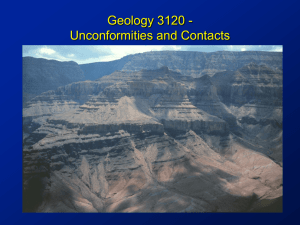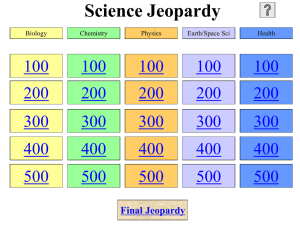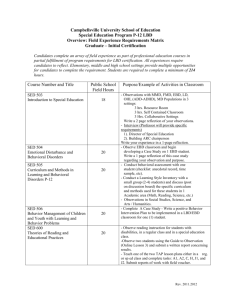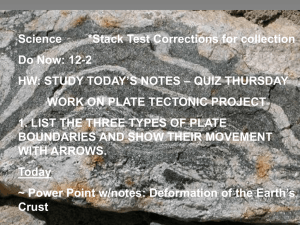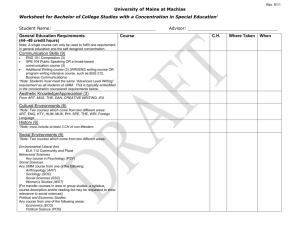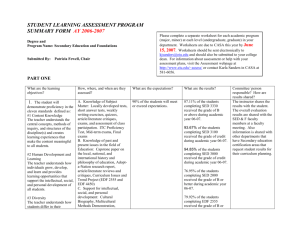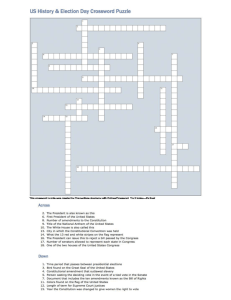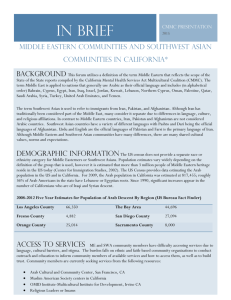Primary structure
advertisement
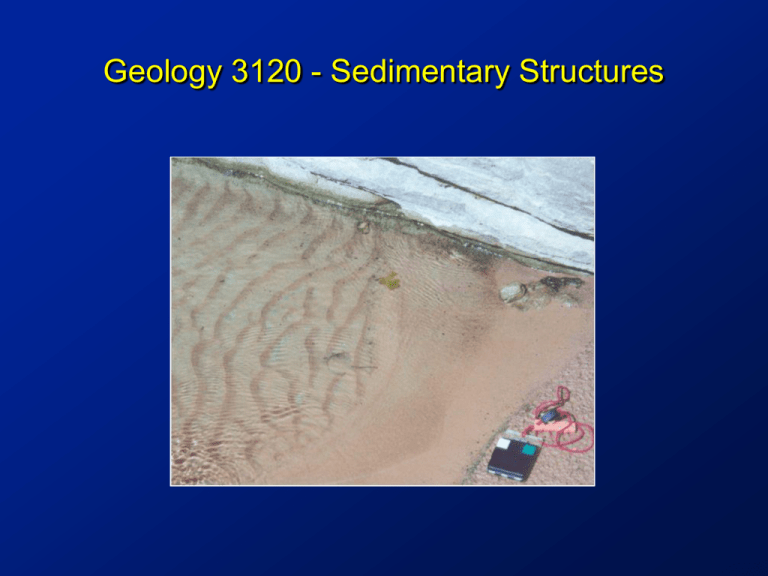
Geology 3120 - Sedimentary Structures Outline • Review the geologic history exercise from last time • Contacts, primary structures, and secondary structures • How to determine which “way is up”… • Cross-bedding, graded-bedding, reverse graded-bedding Determining way up using top surface features - ripples, mudcracks, raindrops, footprints • Determining way up using bottom surface features - load casts • Determining way up using features within rocks geopetal, bioturbation, stromatolites, flame structures, pillow lavas • Block model for exercise 15 Ma Dik e 12 Ma Dik e Nor m al Fault 22Ma 20 Ma Fold 60 Ma Layer G Fold 50 Ma 70 Ma 70 Ma Layer B 80 Ma 60 Ma 80 Ma 70 Ma Thr us t Fault 70 Ma Geologic History 15 Ma Dik e 12 Ma Dik e • 12 Ma dike • 15 Ma dike • Normal fault Nor m al Fault 22Ma 20 Ma Fold 60 Ma Layer G Fold 50 Ma 70 Ma 70 Ma Layer B 80 Ma 60 Ma 80 Ma 70 Ma Thr us t Fault 70 Ma • 20 Ma sed • 22 Ma sed • Erosion • Thrust fault • Folding • Layer B • 60 Ma sed • Layer G • 70 Ma sed • 80 Ma sed Contacts, Primary Structures & Secondary Structures • Contact - a boundary between rock units • Primary structure - structures that form during lithification • Secondary structure - structures that form after lithificaiton Contacts, Primary Structures & Secondary Structures • Contact - a boundary between rock units • Primary structure - structures that form during lithification • Secondary structure - structures that form after lithificaiton Whic h way is up? Today Option 1 Overturned syncline Option 2 “up side down” overturned anticline Cross-bedding Checkerboard Mesa, Zion National Park Concave up Younger Y Flow direction Older Graded bedding Younger Y Older • Decrease in depositional energy with sedimentation • Example: flood deposits, turbidity currents Graded bedding Younger Y Older • Decrease in depositional energy with sedimentation • Example: flood deposits, turbidity currents Reverse (Inverse) Graded Bedding Younger Y Older • Increase in depositional energy with sedimentation • Example: debris flows (a lot less common than normal graded beds) Ripple marks • Symmetric ripples indicate bi-modal current •Concave Y • Asymmetric ripples indicate unidirectional current = up Mud cracks • Desiccation of muddy sediments • Mud cracks 5 cm Raindrops Y • Limited to terrestrial sediments Footprints Y • Limited to terrestrial sediments Load casts Protrusion of material into a layer below • Load casts indicate the base of a layer, not the top of a layer • Determining the current direction may be possible • Geopetal Structures • A “natural” carpenter’s level Shell or cavity in the rock Matrix Y Infill material (I.e., calcite) Bioturbation • Habitation burrows • Feeding burrows • Movement Y Stromatolites Y • Sharks Bay, Australia • Cyanobacteria grow upward toward the surface Flame structures Y Less dense material intrudes into material above • Caused by rapid loading of turbidite sands • Pillow lava Upper curved surface Y “V “ notch References Slide 8 http://www.utahpictures.com/Checkerboard.html Slides 9-15, 17 Busch, R. M. and D. Tasa, Laboratory Manual in Physical Geology, 3rd. Ed., American Geological Institute and National Association of Geology Teachers, 260 p., 1990. Slide 18 http://www.discoverwest.com.au/hablin.html Slide 20 http://volcanoes.usgs.gov/Products/Pglossary/PillowLava.html http://volcanoes.usgs.gov/Products/Pglossary/ancientseq.html
